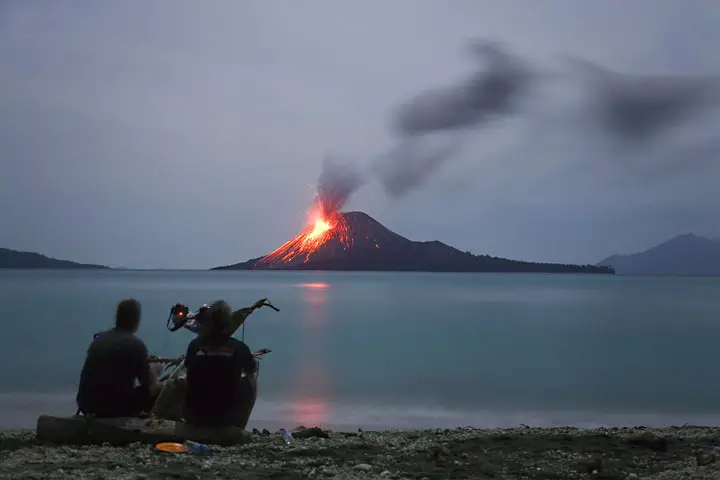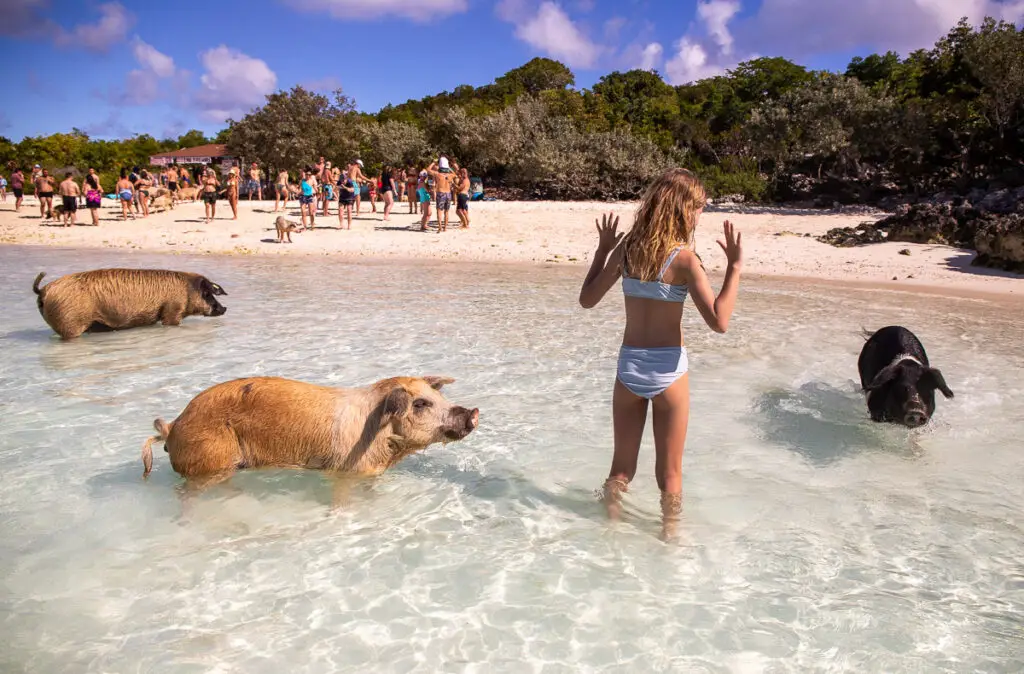Did you know that the Bahamas have volcanoes? Most people don’t know that this Caribbean archipelago, known for its pristine beaches and vibrant culture, is home to an impressive array of volcanoes. In this blog post, we’ll take a closer look at the volcanic history of the Bahamas, as well as some interesting facts about its volcanic activity. Read on to discover what you didn’t know about volcanoes in the Bahamas!
Geological Background of the Bahamas
The Bahamas may be famous for its crystal-clear turquoise waters and stunning beaches, but beneath its idyllic surface lies a fascinating geological history. The archipelago consists of over 700 islands and cays, which are mainly made up of limestone and carbonate rocks. These rocks were formed over millions of years through the accumulation of skeletal remains of marine organisms such as corals and shells.
The Bahamas are situated on a shallow carbonate platform known as the Bahama Banks. This platform was once part of the larger landmass of the North American continent, but over time, it became submerged as sea levels rose. As a result, the Bahamas we know today are actually the exposed tops of ancient coral reefs.
Due to the Bahamas’ unique geological composition, the islands lack the traditional volcanic activity typically associated with other Caribbean islands. Unlike their volcanic neighbors, such as Puerto Rico and St. Kitts, the Bahamas do not have any active volcanoes. This absence of volcanic activity can be attributed to the Bahamas’ formation on a non-volcanic platform.
However, despite the lack of volcanic activity, the Bahamas still offer a fascinating geological landscape. The islands boast stunning blue holes, underwater sinkholes that were formed during past ice ages when sea levels were much lower. These blue holes provide insights into the region’s geological history and are popular attractions for divers and snorkelers.
So, while the Bahamas may not have any active volcanoes, its unique geological background and features make it a must-visit destination for nature enthusiasts and geology lovers alike.
Are there any volcanoes in the Bahamas?
When it comes to the Bahamas, the last thing that comes to mind is volcanoes. And you would be right! The Bahamas do not have any active volcanoes. Despite the archipelago’s stunning natural beauty, volcanic activity is not part of its geological makeup.
The Bahamas’ unique geological composition sets it apart from its volcanic neighbors in the Caribbean. Unlike islands like Puerto Rico or St. Kitts, which were formed through volcanic activity, the Bahamas were created on a non-volcanic platform. Instead of lava flows and volcanic eruptions, the islands are primarily composed of limestone and carbonate rocks that were formed through the accumulation of marine organisms’ skeletal remains over millions of years.
However, just because there are no active volcanoes doesn’t mean the Bahamas’ geological landscape is any less intriguing. The archipelago is known for its blue holes, underwater sinkholes formed during past ice ages when sea levels were lower. These blue holes offer a glimpse into the region’s geological past and are popular spots for diving and snorkeling enthusiasts.
So, while you won’t find any volcanoes in the Bahamas, the archipelago’s geological history and unique features still make it a fascinating destination for nature lovers and geology enthusiasts alike.
Exploring the “Island within an Island”
When you think of the Bahamas, you probably envision pristine beaches, crystal-clear waters, and stunning coral reefs. But did you know that there is a hidden gem within this archipelago? Known as the “Island within an Island,” it is a fascinating and unique feature that will leave you in awe.
Located on Andros Island, the largest of the Bahamas’ islands, the “Island within an Island” is a vast expanse of mangrove forests, blue holes, and wetlands that forms a separate ecosystem within the larger island. This distinctive landscape is like stepping into a whole new world.
Exploring the “Island within an Island” is an adventure like no other. Imagine kayaking through serene mangrove tunnels, where the dense foliage creates a natural canopy above you. You can observe a diverse range of bird species, from egrets to herons, as they nest among the mangroves.
One of the highlights of this unique island is the mesmerizing blue holes. These underwater sinkholes are not only a geological wonder but also home to an array of marine life. Diving or snorkeling in these blue holes will take you on a surreal journey, where you can encounter colorful fish, delicate coral formations, and maybe even some elusive sea turtles.
But the “Island within an Island” is not just about natural beauty. It is also a haven for adventure seekers. Explore the wetlands by kayak or take a guided tour to spot native wildlife, such as the Andros Rock Iguana or the endangered Bahamian hutia.
Whether you are a nature enthusiast or an adventure seeker, exploring the “Island within an Island” in the Bahamas is an experience you won’t want to miss. It’s a chance to discover a hidden world within one of the world’s most beautiful archipelagos.
Understanding the unique limestone formations
The Bahamas may be best known for its stunning beaches and turquoise waters, but beneath its picturesque surface lies a geological wonderland. One of the most fascinating aspects of the Bahamas’ geological makeup is its unique limestone formations.
Limestone, a sedimentary rock composed of calcium carbonate, is the dominant rock type found throughout the Bahamas. What makes the limestone formations in the Bahamas so special is their intricate and diverse nature. From towering cliffs to delicate caves, the limestone has been shaped by millions of years of erosion, weathering, and chemical processes.
The Bahamas’ limestone formations are a testament to the power and beauty of nature. One notable example is the breathtaking Dean’s Blue Hole, the deepest known saltwater blue hole in the world. These natural sinkholes are formed when the limestone erodes, creating vertical shafts that plunge deep into the earth.
Exploring the unique limestone formations of the Bahamas is like stepping into a geological wonderland. You can wander through vast limestone caves, marvel at stunning stalactite and stalagmite formations, and witness the incredible resilience of the island’s ecosystem.
The limestone formations also serve an important ecological role. They act as a natural reservoir, storing rainwater and replenishing the underground water supply. The porous nature of the limestone allows for the filtration of water, resulting in crystal-clear underground streams and freshwater lenses.
So, next time you find yourself in the Bahamas, take a moment to appreciate the unique limestone formations that make this archipelago truly remarkable. They are not only a testament to the power of nature but also a reminder of the incredible diversity that can be found in even the most unexpected places.
The impact of climate change on the Bahamas’ geology
The Bahamas, with its stunning natural beauty and unique geological features, is not immune to the impact of climate change. As global temperatures rise and sea levels continue to increase, the delicate geology of the islands is facing significant challenges.
One of the major concerns for the Bahamas is the threat of coastal erosion. The islands’ sandy beaches, which attract tourists from around the world, are particularly vulnerable to the rising sea levels. As waves and storms become more intense, the erosion of these beaches is accelerating, leading to the loss of valuable land and potential damage to infrastructure.
Another significant impact of climate change on the Bahamas’ geology is the increased frequency and intensity of hurricanes. The archipelago is already prone to hurricanes, but with warmer sea temperatures, these storms are becoming stronger and more destructive. The powerful winds and storm surges associated with hurricanes can cause significant damage to the islands, including erosion, flooding, and the destruction of coral reefs.
Speaking of coral reefs, these vital ecosystems are also suffering due to climate change. Warmer ocean temperatures and increased acidity levels are leading to coral bleaching, a process that can ultimately lead to the death of coral reefs. The Bahamas’ coral reefs are not only beautiful but also provide habitats for a wide variety of marine life. Their loss would have devastating consequences for both the ecosystem and the tourism industry.
Overall, the impact of climate change on the Bahamas’ geology is a serious concern. As the world grapples with the effects of a changing climate, it is crucial to prioritize efforts to mitigate and adapt to these changes. Protecting the fragile geology of the Bahamas is not only important for preserving its natural beauty but also for the livelihoods and well-being of its inhabitants.


